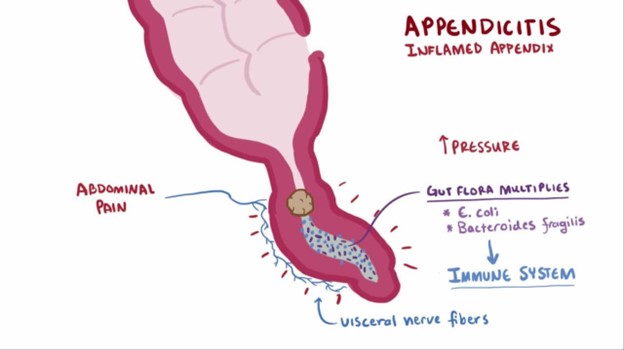A nurse is teaching the mother of a child who has cystic fibrosis and has a prescription for pancreatic enzymes three times per day. Which of the following statements indicates that the mother understands the teaching?
"My child will take the enzymes following meals."
"My child will take the enzymes to improve her metabolism."
"My child will take the enzymes 2 hours before meals."
"My child will take the enzymes to help digest the fat in foods."
The Correct Answer is D
D. "My child will take the enzymes to help digest the fat in foods."
Cystic fibrosis (CF) affects the exocrine glands, leading to thick and sticky mucus production, which can block the pancreatic ducts. As a result, children with CF have difficulty digesting fats and absorbing fat-soluble vitamins. Pancreatic enzyme replacement therapy (PERT) is prescribed to help improve fat digestion and nutrient absorption. These enzymes are taken with meals and snacks to aid in the breakdown of fats.
The other options are incorrect:
A. "My child will take the enzymes following meals." - This is the correct timing for taking pancreatic enzymes. The enzymes should be taken with meals and snacks, not following meals.
B. "My child will take the enzymes to improve her metabolism." - The purpose of taking pancreatic enzymes is not related to improving metabolism but to assist in fat digestion and nutrient absorption.
C. "My child will take the enzymes 2 hours before meals." - Taking pancreatic enzymes 2 hours before meals is not the recommended timing. They should be taken with meals and snacks to aid in fat digestion while eating.
Nursing Test Bank
Naxlex Comprehensive Predictor Exams
Related Questions
Correct Answer is B
Explanation
The nurse should clarify the prescription to administer sodium biphosphate/sodium phosphate because it is a laxative and is contraindicated in a child with suspected appendicitis. The use of laxatives or enemas can potentially worsen the condition by increasing the risk of perforation or rupture of the inflamed appendix.
A. Monitoring oral temperature every 4 hours is important to assess for signs of infection or worsening condition.
C. Maintaining NPO status is essential to avoid stimulating the digestive system and to prepare for possible surgery.
D. Medicating the client for pain every 4 hours as needed is appropriate to manage pain and provide comfort while the child awaits further evaluation or treatment.
Remember, it's crucial to avoid the use of laxatives, enemas, or any other interventions that can potentially aggravate the inflamed appendix in a child with suspected appendicitis.

Correct Answer is B
Explanation
In this scenario, the infant has a heart rate of 190/min and a fever of 40°C (104°F). Fever in infants can cause an increase in heart rate, which is a normal physiological response to elevated body temperature. Fever is the body's way of responding to an infection or illness, and it triggers various physiological changes, including an increase in heart rate. This helps the body to circulate blood and deliver immune cells to fight off the infection.
The other options are not accurate or relevant to the infant's current condition:
A. "This is within the expected range for your baby." - A heart rate of 190/min is above the normal expected range for a 2-month-old infant, which is typically between 120 to 160 beats per minute. This response would not address the elevated heart rate and fever.
C. "As your baby begins to fall asleep, his heart rate will decrease." - While heart rate may decrease during sleep, it does not explain the elevated heart rate and fever observed in this situation.
D. "Your baby's heart is beating fast in an attempt to cool down his body." - While tachycardia (fast heart rate) can be associated with increased metabolic demands during fever, the main reason for the increased heart rate in this case is the fever itself, not the body's attempt to cool down. Fever is a response to infection or illness and can cause an increase in heart rate as part of the body's normal immune response.
Whether you are a student looking to ace your exams or a practicing nurse seeking to enhance your expertise , our nursing education contents will empower you with the confidence and competence to make a difference in the lives of patients and become a respected leader in the healthcare field.
Visit Naxlex, invest in your future and unlock endless possibilities with our unparalleled nursing education contents today
Report Wrong Answer on the Current Question
Do you disagree with the answer? If yes, what is your expected answer? Explain.
Kindly be descriptive with the issue you are facing.
